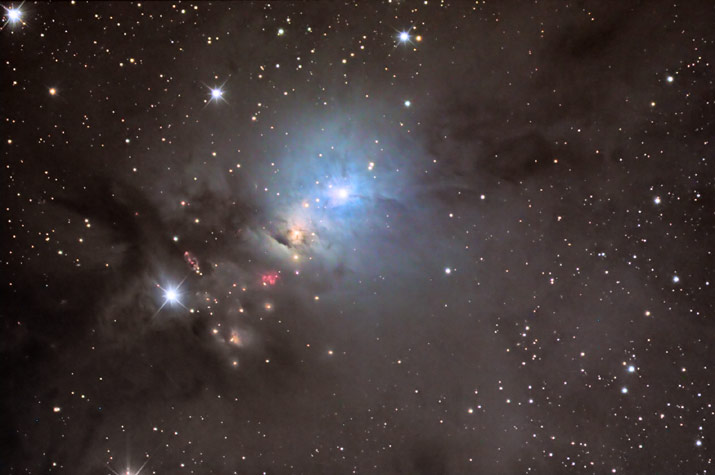heehaw wrote:Never seen dust like that before! What's going on?
Good question. We do have a violent outflow of dust (and gas, though the gas is invisible).
The dusty tendrils clearly emanate from the very dusty region at center left. This is obviously a place where stars are being born. We can see the reddened orange light of baby stars peeking through openings in the dusty cocoon.
Star formation is associated with outflows and with bipolar jets from young stars. I can't say that the black dust in today's APOD looks much like the product of collimated jets, but clearly some sort of violent process is going inside that "American football of dust".
Note that the dust seems to emanate from the part of the "football" that seems to be pointed away from us. The part that is pointing our way is dominated by orange cracks and openings, but the part where the dust is mostly coming from is denser. It is not impossible that that the star formation that is going on in that denser part is more violent, or at least, that it is particularly dominated by stars producing outflows by different mechanisms.
Also note that the the dust is flowing right across the streaky blue reflection nebula at right. The dust there isn't black, because it is reflecting the blue light of the star in there back our way, much like the reflection nebulas of the Pleiades. Remember that dust is lit up, often in blue, when it reflects light our way. The dust looks black when it completely blocks light behind it from reaching us. When it blocks some light, but not all, the light that reaches us will typically be yellow, orange or red.
If the blue star in the streaky reflection nebula also produces some outflows, it could possibly be pushing the black streaks of dust away from itself. It does look as if the dusty tendrils are being blown away from that star. It could possibly be that the dusty outflows are somehow produced inside that elongated cocoon of dust, and then they might be "blown to one side" by the possible antics of the blue star in the streaky reflection nebula.
EDIT: I take that back. The blue star probably isn't doing much to the black tendrils one way or another.
In any case, what I've written here is just guesswork, at least when it comes to explaining those black tendrils of dust.
Ann
 NGC 2170: Still Life with Reflecting Dust
NGC 2170: Still Life with Reflecting Dust

